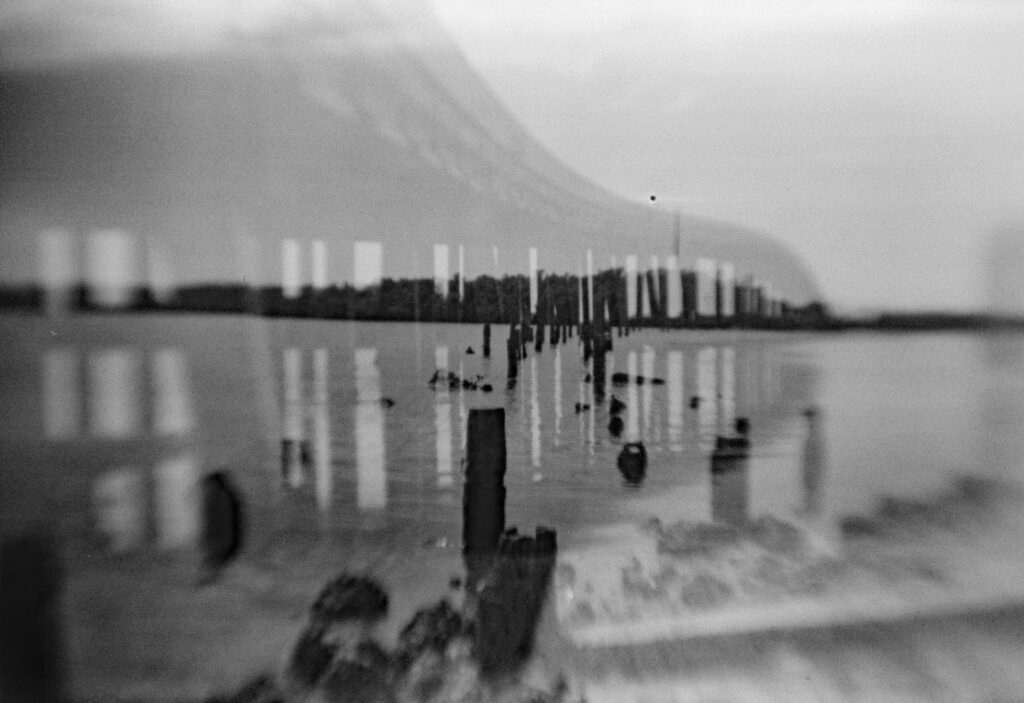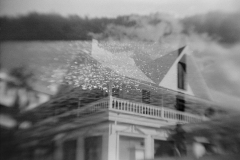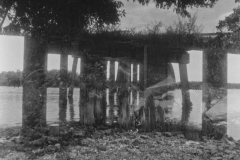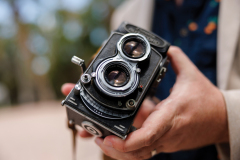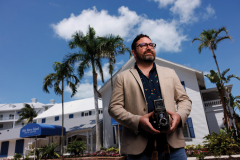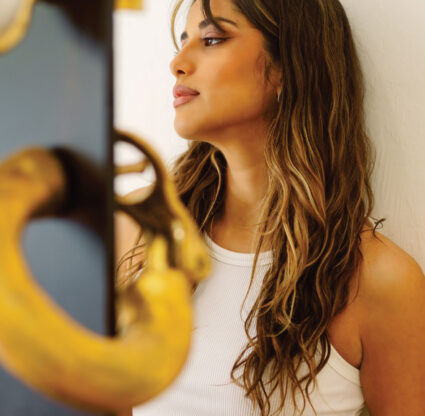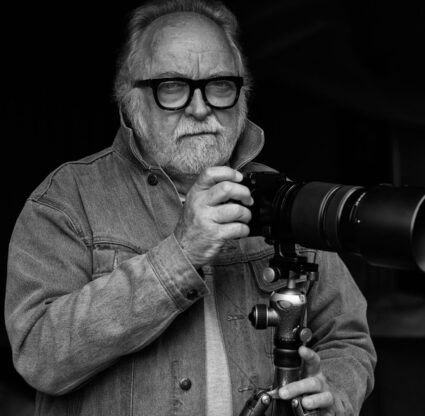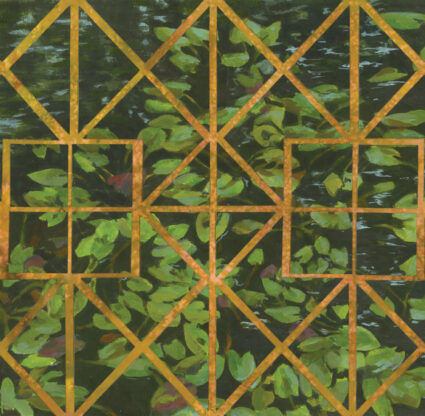Austin Bell adjusts his footing in the damp sand, carefully lifting his vintage Kodak Brownie Target Six-20 camera from a canvas bag. He’s about to photograph Old Marco Inn. Once one of the only buildings you could see when entering Marco Island, its waterfront views have long been shrouded by residences. “I’ve had to learn how to use these because they’re older than I am by far,” the 30-year-old says. “This camera has no settings; you pull a lever to take a photo. It’s actually very difficult to create a beautiful photograph, to compose and get the lighting right.”
You might know Austin as the curator of collections at Marco Island Historical Society’s museum, which he’s run for 10 years. Or maybe you’ve heard of his award-winning book, The Nine Lives of Florida’s Famous Key Marco Cat, detailing the famous Calusa artifact. (He also wrote a kids’ book on the subject and has produced a few historical Marco photography books.) Austin—who graduated from the University of Florida with a master’s in museum studies—wears many hats, including director-at-large for the Florida Anthropological Society’s board of directors and chairman of the Collier County Historical Archaeological Preservation Board. His brainy extracurriculars sharpen his photography skills, developing his prowess in researching subjects. This September, his artistic momentum surges with a solo photography show, Re:Location, at Marco Island Center for the Arts.
Austin discovered photography in high school and has long favored dramatic stills of his home state. For the new series, he double-exposes images—shooting two photos on one frame—to superimpose historic structures against their former location or remnants of their past. The Old Marco Inn, for instance, is shown atop a capture of the Collier Bay inlet to represent the hotel’s former watery views that have since been obstructed by residential development. “The film doesn’t actually move,” he explains. “If you lock the reel or forget to wind it, it keeps the same film frame in your viewfinder to get the double exposure.” In one photo, the current Goodland Bridge’s pale silhouette overlays the remnants of the former wooden swing bridge; in another, he places a 1920s cottage that was moved from the long-gone Caxambas village to Margood Harbor Park in Goodland in the ’50s over a photo from the edge of a rare vacant lot in southern Marco, where the village stood. The photos preserve his subjects in a different light from the island’s Kodachrome palette. They’re bare and ghostly in their unretouched state, too heartfelt and solemn to be cheerfully, tackily nostalgic.
Austin’s day job finds him enmeshed in Marco Island history, but Re:Location’s ethos could be applied to any Floridian town prone to rapid growth. The series breathes new life into regional lore. “Old Florida is increasingly rare,” he says. “These buildings are moving, but that might not be the last stop in their journey. It’s a way of documenting them, but with a little bit more meaning behind it.” It’s not unusual for historic buildings on our barrier islands to be uprooted and relocated for development. “I feel like it’s all endangered,” he continues. “Bringing these two spaces together—the old and new location—is a way to tell a story about that particular building.”
Austin began experimenting with film after his wife, Naples Botanical Garden exhibitions director Erin Wolfe Bell, bought him the 1940s Brownie Target. He now has a small fleet of 12 cameras. “They bring an authenticity to the image,” he says. Austin appreciates that his cameras date from around the same Postwar era.
He also likes the tactility of film. You can’t automatically manipulate your settings or check your progress as with a digital camera. Austin shoots the first subject, then the next one on one frame, often traveling to a second location in between. Since he can’t check the original shot or skip forward to the next frame, he has to memorize the original framing and get the parallel alignment by sight and feel. He may make up to 24 stops with one roll of film in pursuit of the ideal image.
Austin’s setup is fairly minimal: he brings a few vintage cameras, a tripod and a journal. “I keep a journal to annotate which image is currently in the viewfinder to remember what I’ve shot, and in case I need to take the second image on another day.” As a Marco Island resident and through his work at the Historical Society, Austin knows his town well, but he’ll also scour maps to research routes between sites. “I revisit the places until I get the perfect shot,” he says.
He’s content if just one negative in a whole roll turns out well enough for him to include in Re:Location. He ships his film to a longtime photo lab in New Hampshire to be developed in their darkroom and printed. “One advantage of making these on film is that, in 20 years, the film will still be there, and you can bring it into a darkroom and change and alter it then,” Austin says. His goal, as he rediscovers long-forgotten island sites, is to revisit the film years from now in a darkroom of his own.
He looks down fondly at the Brownie Target in his hands. It’s an understatement when the curator-cum-photographer says, “I like to bring life to old things.”
Marco Hotel 2021 by Austin Bell ( Kodak Brownie Target Six-20)
Goodland Bridge 2021 by Austin Bell (Kodak Brownie Hawkeye)
Last two photographs by Brian Tietz

